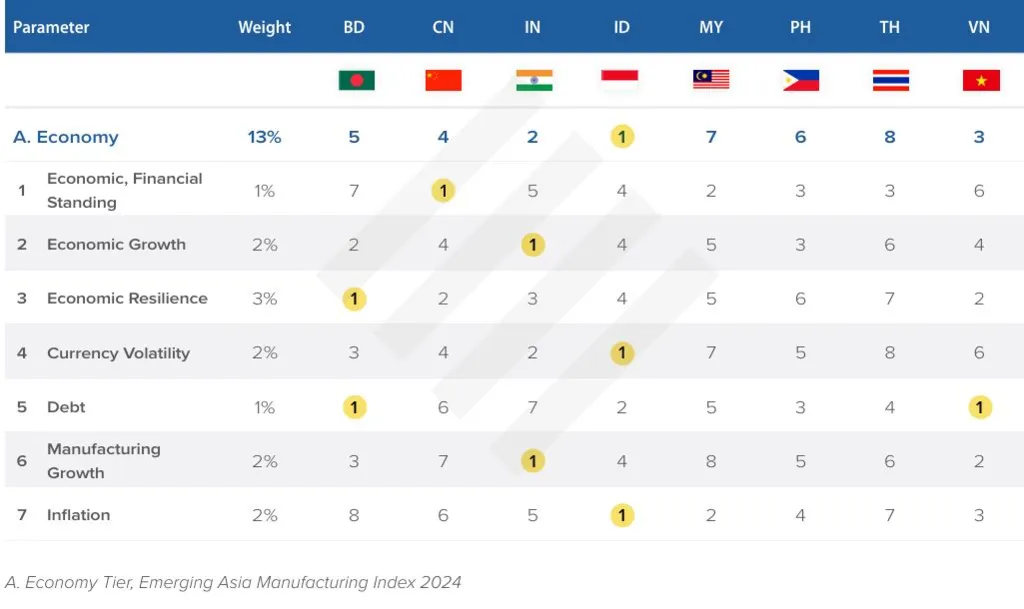Thailand’s manufacturing sector continues to be a pillar of economic strength. In 2025, the market is projected to reach US$178.03 billion, with steady growth expected at a CAGR of 1.53% through 2029. This momentum is rooted in the country’s long-standing export-driven strategy and its growing ability to adapt to global economic shifts. Let's take a closer look at the Thailand Manufacturing Market Resilience below!

Exports Powering Thailand Manufacturing Market Resilience
Manufacturing is a major contributor to Thailand’s exports, which make up 60% of the national GDP. In 2024, exports rose to US$300 billion, a 5.4% year-on-year increase, showing continued global demand. Key growth came from the U.S. (+12.5%), India (+16%), and the EU (+11%), while ASEAN neighbors accounted for over 23% of total exports, strengthening regional ties.
PMI Recovery Signals Growth
One key indicator of resilience is Thailand’s Purchasing Managers’ Index (PMI), which rose to 50.6 in February 2025, marking the eighth expansion in ten months. Although April saw a slight dip to 49.5, production volumes continued climbing for a third straight month, and staffing levels grew for the first time since late 2024. These trends reflect cautious optimism within the sector.
Bright Spots Amid Global Shifts
While some parts of the global economy remain uncertain, Thailand’s manufacturing sector shows resilience in key industries. The electric vehicle (EV) market, digital infrastructure development, and targeted government stimulus are sustaining growth even in the face of broader slowdowns. These sectors are setting the pace for recovery and long-term transformation.
Read Also: Thailand Automotive Industry Trends are Shifting to EV Dominance
Automation and Smart Manufacturing Inside Thailand Manufacturing Market Resilience
Thailand’s “Industry 4.0” initiative is driving the transition to smart manufacturing. Automation, AI, and IoT are increasingly being adopted to modernize production lines. As of 2019, 30% of manufacturers had integrated robotic technology. The government aims to increase this to 50%, reinforcing its commitment to tech-driven competitiveness.
Building a Future-Ready Workforce
Technology alone won’t secure resilience. Thailand plans to train 280,000 specialists in advanced industries by 2030. The roadmap includes:
150,000 workers for EV production
80,000 for semiconductor manufacturing
50,000 for AI and digital tech roles
This focus on workforce development is essential to ensuring that digital adoption translates into sustainable productivity gains. Additionally, universities like KMUTT are launching industry-tailored courses in smart manufacturing, ensuring a pipeline of skilled labor to sustain Thailand’s competitive edge.
Read Also: Thailand Digital Construction Tools Transforming the Sector
Read Also: Shortage in Skilled Labor in Thailand: Can Training Help?
Thailand’s Role in Global Supply Chains
As companies diversify away from traditional hubs like China, Thailand’s strategic location, robust infrastructure, and investor-friendly policies, such as BOI incentives, are attracting multinationals. For instance, Tesla’s recent feasibility study for an EV plant underscores Thailand’s appeal as a regional EV hub. Meanwhile, Western Digital and Infineon are expanding semiconductor operations here, capitalizing on Thailand’s stable supply chain ecosystem. With 40% of global HDDs already produced in the country, Thailand is cementing its position as a low-risk, high-growth manufacturing base for the long term.
Thailand Manufacturing Market Resilience: A Market Built to Adapt
The Thailand manufacturing market resilience story is built on more than numbers—it’s built on adaptability, foresight, and smart policymaking. As exports rise, automation takes hold, and talent is cultivated, Thailand is proving that it can not only survive economic shifts, but lead through them. In 2025 and beyond, the nation’s manufacturing sector is positioned not just to recover, but to thrive.






